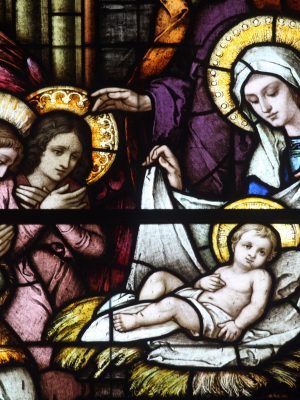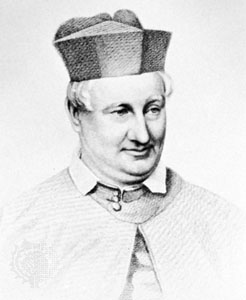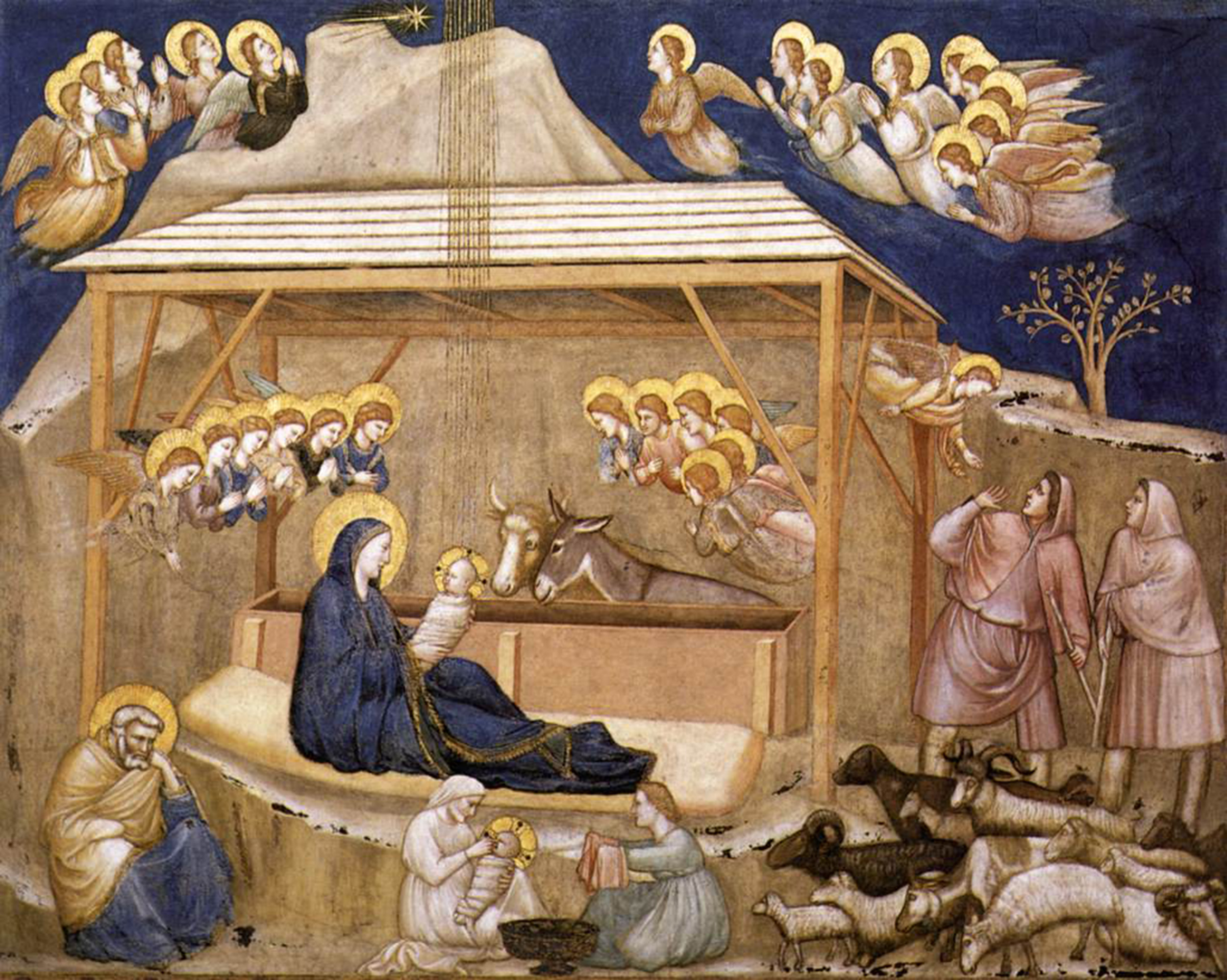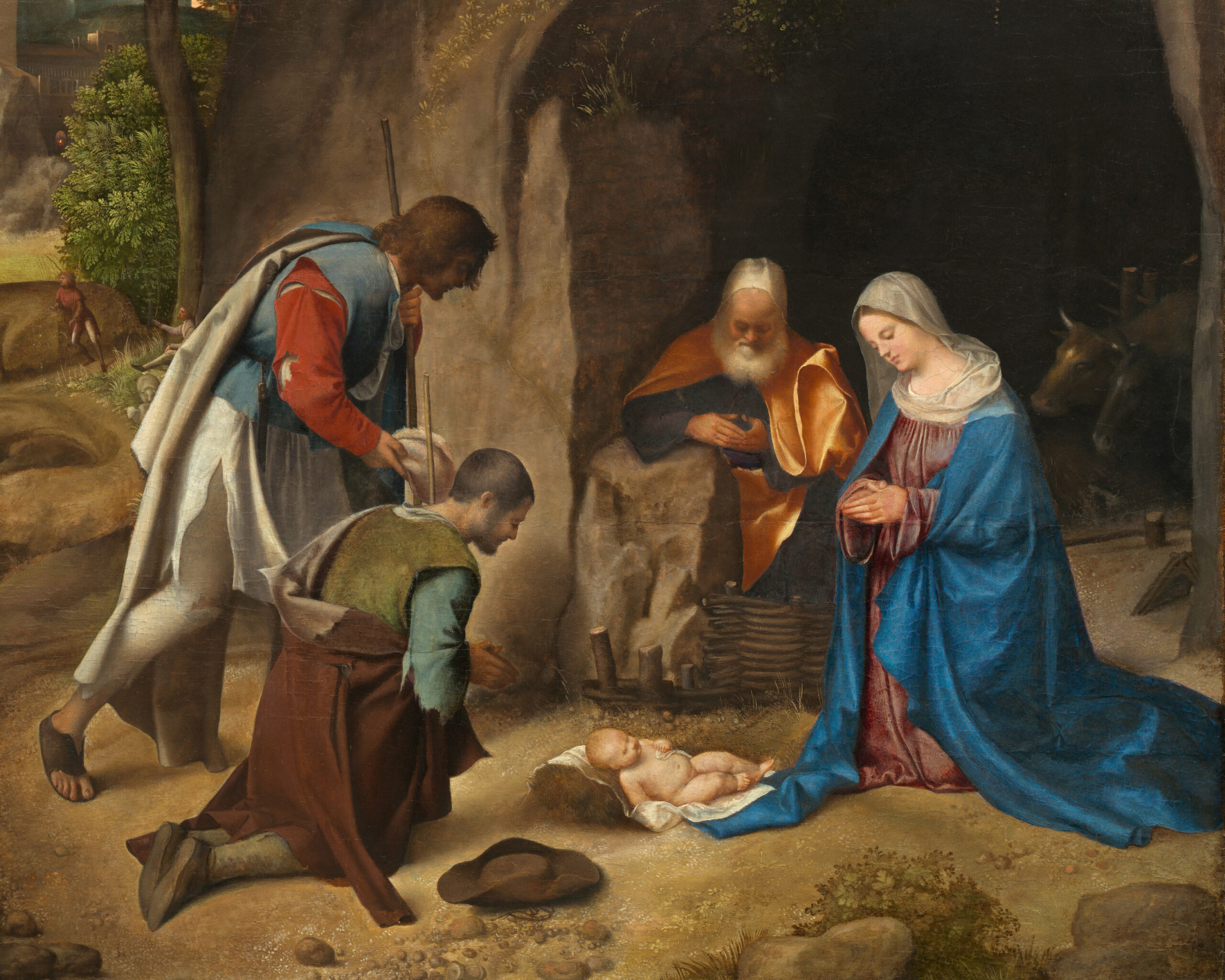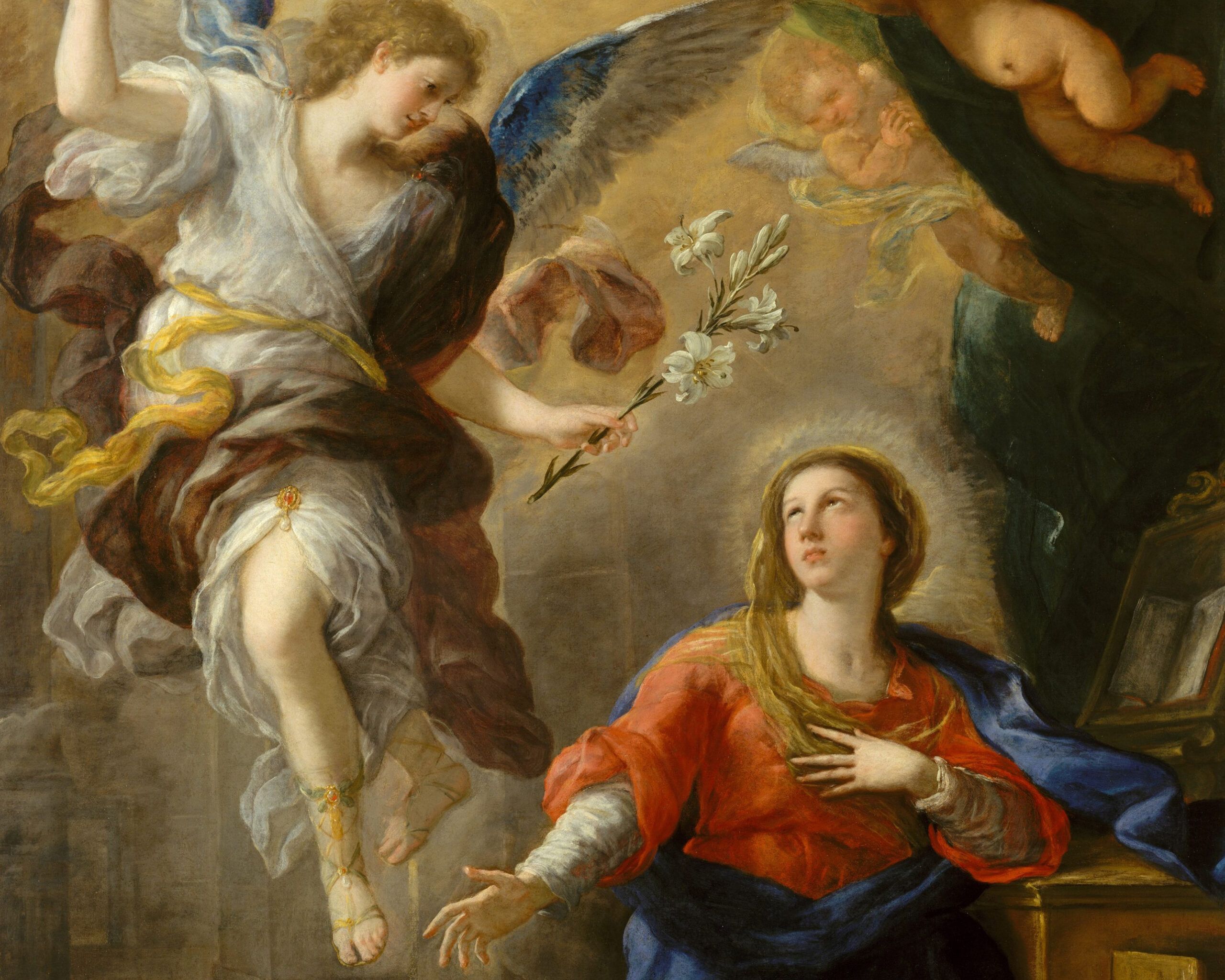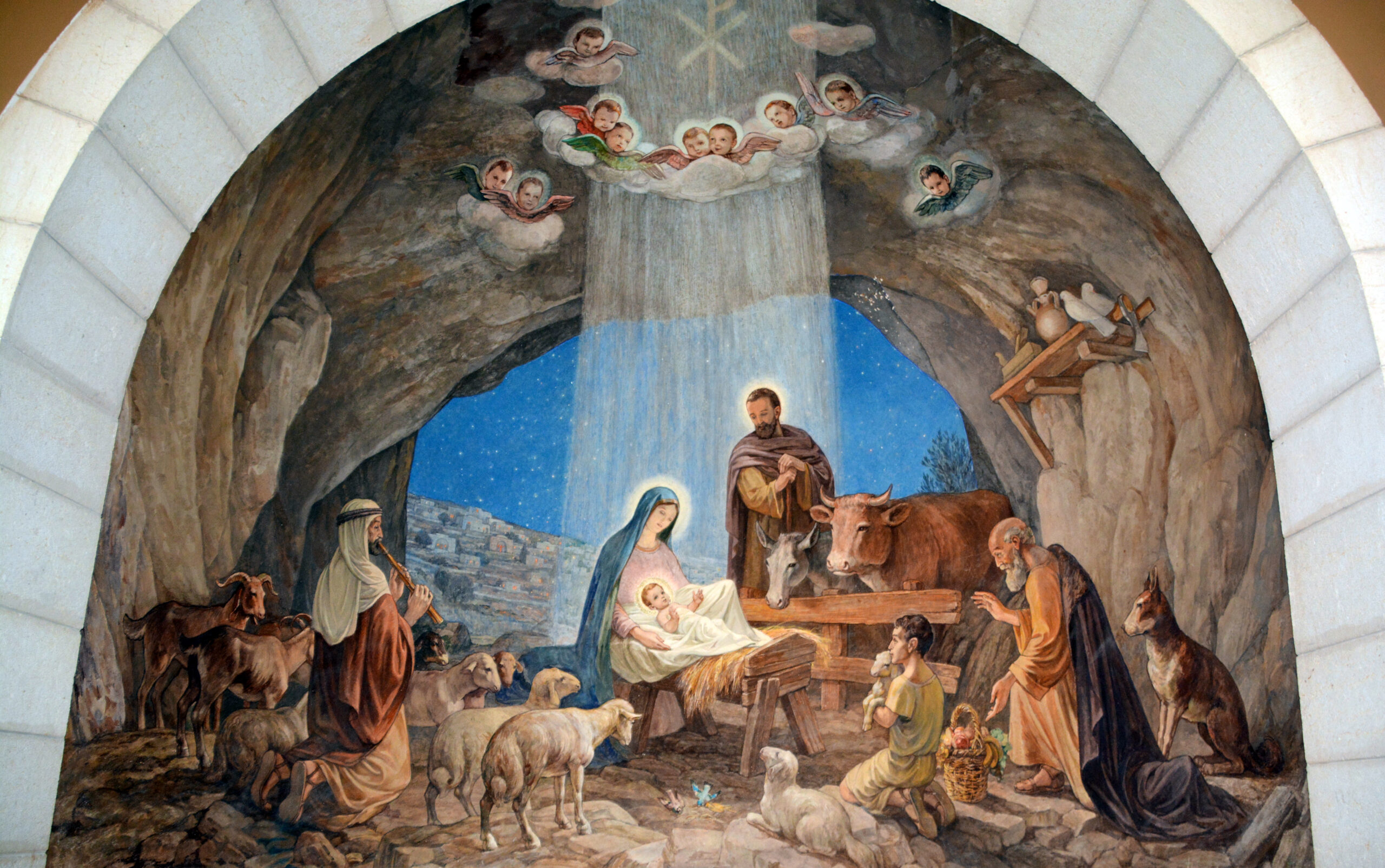” Yet neither Nazareth nor Bethlehem were his beginnings. He was eternal years old the moment he was born. “
-Fr. Frederick Faber
Below is a unique Christmas meditation from the famous English convert to the Catholic Faith, Fr. Frederick Faber of London, England. Fr. Faber has long been revered for his thoroughly enjoyable and erudite style of writing.
Fr. Faber had been an Anglican priest for several years before his conversion to Catholicism. Two years after he was received into the Church, he was ordained a priest. He later helped found the London Oratory, where he is today interred and pilgrims pray before his final resting place.
The following meditation was penned by Fr. Faber in the 1850’s as a treatise on the sacred infancy of Christ, taken from the TAN Books classic, Bethlehem: the Sacred Infancy of Our Most Dear and Blessed Redeemer.
“Jesus Christ yesterday, and today, and the same forever! These words of the apostle express at once the noblest and the most delightful occupation of our lives. To think, to speak, to write, perpetually of the grandeurs of Jesus, – what joy on earth is like it, when we think of what we owe to him, and of the relation in which we stand to him?
Who can wary of it? The subject is continually growing before our eyes. It draws us on. It is a science the fascination of which increases the more deeply we penetrate into its depths. That which is to be our occupation in eternity usurps more and more with sweet encroachments the length and breadth of time.
Earth grows into heaven, as we come to live and breathe in the atmosphere of the Incarnation. Jesus makes heaven, wherever he is, whether it be in the tabernacle, or in the heart of the communicant, just as he took the Beatific Vision with him into limbus when he died, and turned the pensive shadows of the patriarchs’ home into the full glow of heaven.
But the contemplation of his grandeurs is not merely a joy. It is something beyond an ennobling occupation. It does an actual work in our souls, and a work which the grace of perseverance can make immortal.
Rigouleuc has well said,
‘It is sufficient to look on Jesus, and to contemplate his perfections and his virtues. The very view is of itself capable of producing marvelous effects upon the soul, just as a simple look at the brazen serpent, which Moses reared in the wilderness, was enough to heal the bite of the serpents. For every thing in Jesus is not only saintly, but sanctifying also, and imprints itself on the souls which apply themselves to the consideration of it, if they do so with good dispositions. His humility makes us humble; his purity purifies us; his poverty, his patience, his sweetness, and his other virtues imprint themselves on those who contemplate them. This may take place without our reflecting at all upon ourselves, but simply by our viewing these virtues in Jesus with esteem, admiration, respect, love, and complacency.’
Let it be with this hope that we now draw nigh to Bethlehem to study the mysteries of his Sacred Infancy. Love labors under the sweet impossibility of ever comprehending the majesty of our dearest Savior. We shall see more at Bethlehem than we can understand; and even what we cannot understand will fill us full of love, and it is love which makes us wise unto salvation.
There are two ways in which we can look at the mysteries of the Thirty-Three Years. We can either examine each mystery by itself, as it is revealed to us in the Gospels, or we can arrange the mysteries in classes, representing certain divisions in Our Lord’s life.
Thus, Bethlehem, Nazareth, Galilee, Calvary, and Genesareth, will stand for his Infancy, his Hidden Life, his Public Ministry, his Passion, and his Risen Life; and each of them will represent many events under one head.
It is in this last way that I propose to consider our Lord’s Sacred Infancy. We may regard the first twelve years as forming one mystery, with a character and spirit of its own, quite distinguishable from the character and spirit of the Hidden Life or of the Public Ministry.
Bethlehem is a most beautiful and inviting subject, well worthy of the exclusive contemplation of a long life.
We have to penetrate into the Bosom of the Eternal Father, and, shading our eyes as best we can, to behold the everlasting generation of the Word.
The Bosom of Mary has to be to us, as it was to him, an “ivory Palace” of unspeakable deligths. The cave at Bethlehem and the courts of Sion, the sands of the wilderness and the green Nile-bank, the bazaars of Heliopolis and the sequestered fields of Nazareth, angels singing in mid-air, shepherds watching the three kings journeying by the star.
The piteous cries of the innocents and the wailing of their inconsolable mothers, Mary and Joseph, Simeon and Anna, the rustics of Nazareth and the doctors of Jerusalem, – these have to occupy us in turn, as the scenes or the actors in ravishing mysteries, which light up for us the deep places in the character of God, and most intimately concern ourselves and our own salvation.
The Sacred Infancy is a world of its own. It is not indeed a creation apart, for one of God’s creations are creations apart. They are parts of a whole. Yet there is this peculiarity in the world of the Sacred Infancy, that the fountain of all creation rises there.
It is the home of the predestination of Jesus, the land of his eternal beginnings in the mind of God. It does not commence with the angelic salutation at Nazareth. It runs up into eternity.
It begins with the beginnings of Jesus, and runs down to the twelfth year after his temporal generation. The Babe of Bethlehem lies in the Bosom of the Father on high, and is the cause there of all creation, and its model as well as its cause.
We cannot detach his earthly childhood from these heavenly beginnings; for without them it would be unintelligible. It is a beautiful land to traverse, more wonderful than the religious childhood drams of in its inarticulate poetry as lying somewhere beyond the gates of the golden sunset.
The reasons of the Creator for his entry into his own creation, the unexpected method of his coming, the beauty, spiritual, intellectual, and artistical, of his mysterious demeanor, the Immutable mutably adapting himself to the condition of a weak, mute, mortal childhood, – these are the wonders that throng our path through that divine land which we are now venturing to explore.
We shall learn most of them by being simple with them; and we must be patient and attentive with the difficulties; for some difficulties there must be. At the least we shall love God a degree better at the end of our task, and one fresh degree of love for him is worth many martyrdoms; and with this hope and this conviction we will begin.
Who shall we ask to go with us in our journey? Who shall be to us the doctor of the Sacred Infancy? Surely St. Joseph, so near to the Infant Jesus, so dear to his sinless Mother! If ever Saint was penetrated with the spirit of Bethlehem, doubtless it was he.
Before the toil of the Public Ministry began, before the shadows of the Passion had begun to thicken palpably on the horizon, St. Joseph had finished his vocation.
He belonged to Bethlehem and Nazareth; and God took him when Nazareth was ending. He lay in the contented tranquility of Abraham’s bosom, while Jesus was drinking his cup of sorrow, and Mary was bearing her broken heart about with her through the crowded mysteries of those three eventful years.
The spirit of the Sacred Infancy is as it were his whole sanctification. No one can tell us more than he can of the young Mother’s heart, and of the Heart of the Divine Child. So we must intreat him to go with us, and to help our prayers for light, and to surround us with the atmosphere of his own meek and meditative spirit; and we too must remember his presence, even when we do not mention him, so that our very thoughts and words may unawares be impregnated with the odor of his fragrant soul.
St. Joseph is kneeling by the Child in the Cave of Bethlehem. Let us draw near, and kneel there with him, and follow his thoughts afar off. It is but an hour since that Babe was born into the world, and gladdened Mary’s eyes with the divine consolations of his Face. It is but nine months since he was incarnate in the inner room at Nazareth.
Yet neither Nazareth nor Bethlehem were his beginnings. He was eternal years old the moment he was born. Time, which had already lived through such long cycles, and had perhaps endured through huge secular epochs before the creation of man, was younger by infinite ages than the Babe of Bethlehem.”
Source: Bethlehem by Fr. Frederick William Faber (TAN Books, 2011), pp. 11-15.


